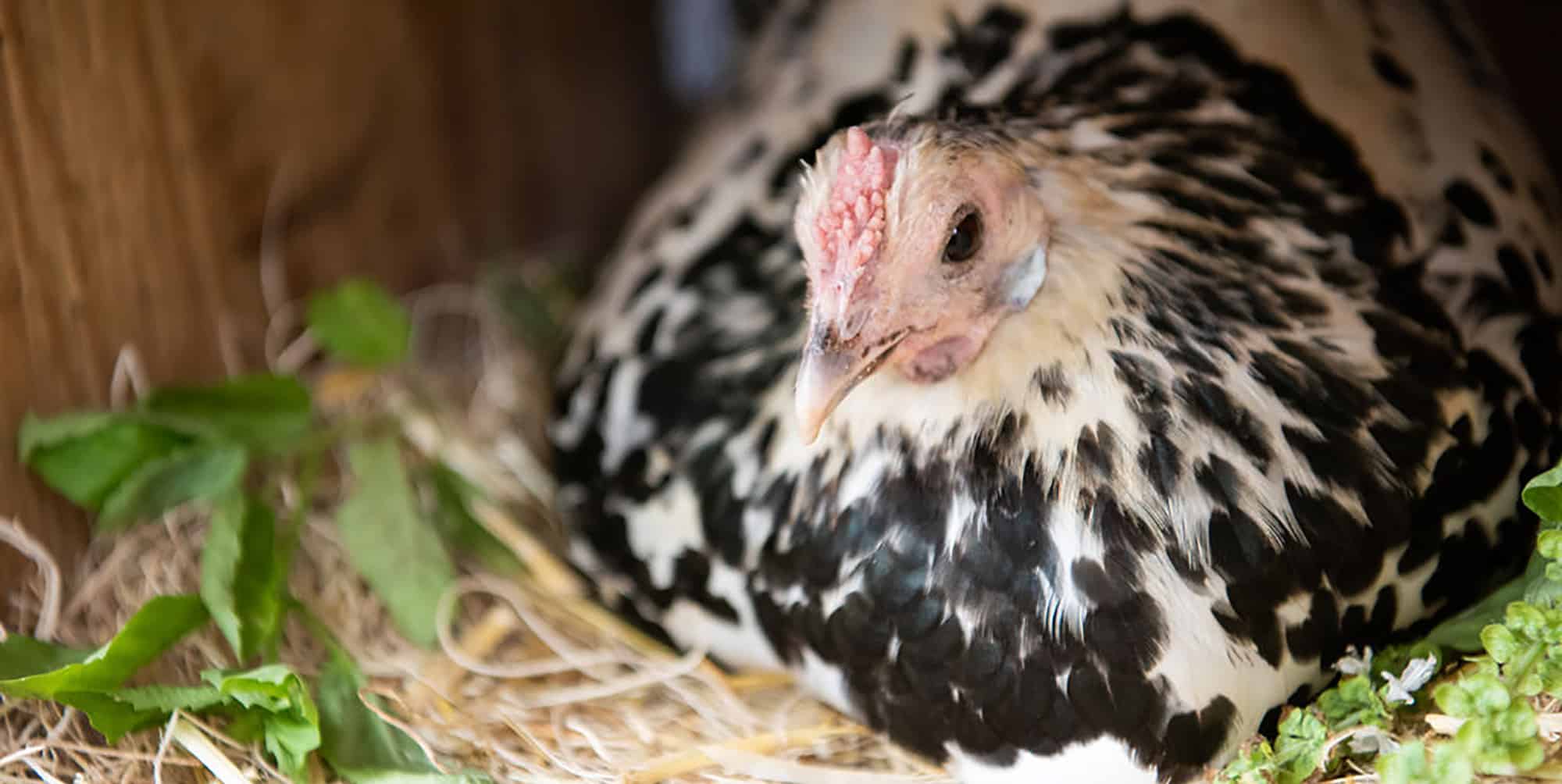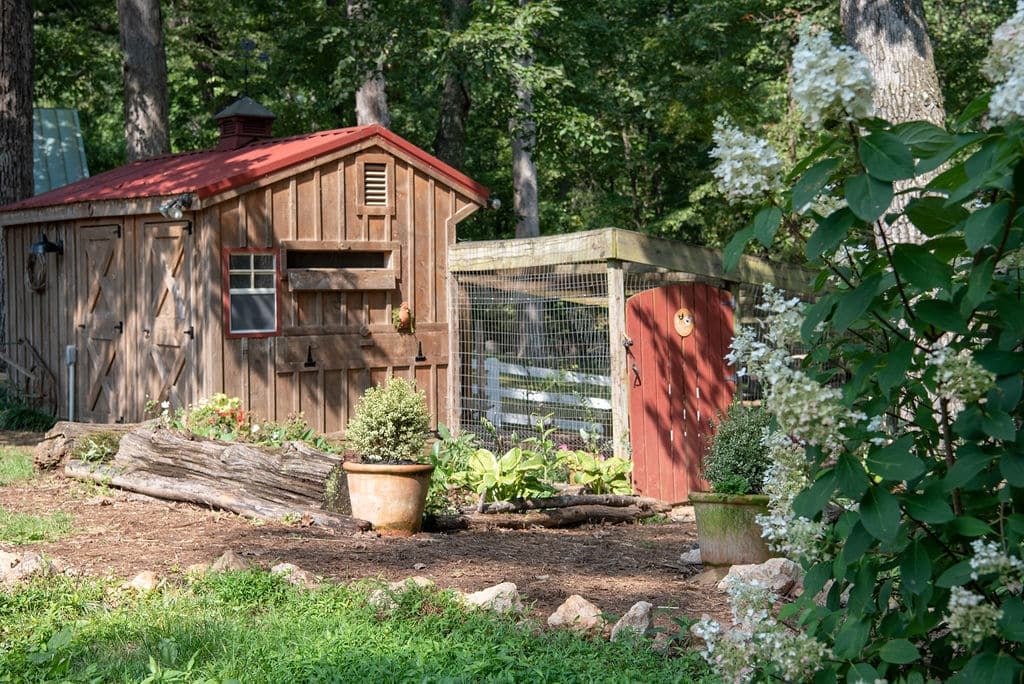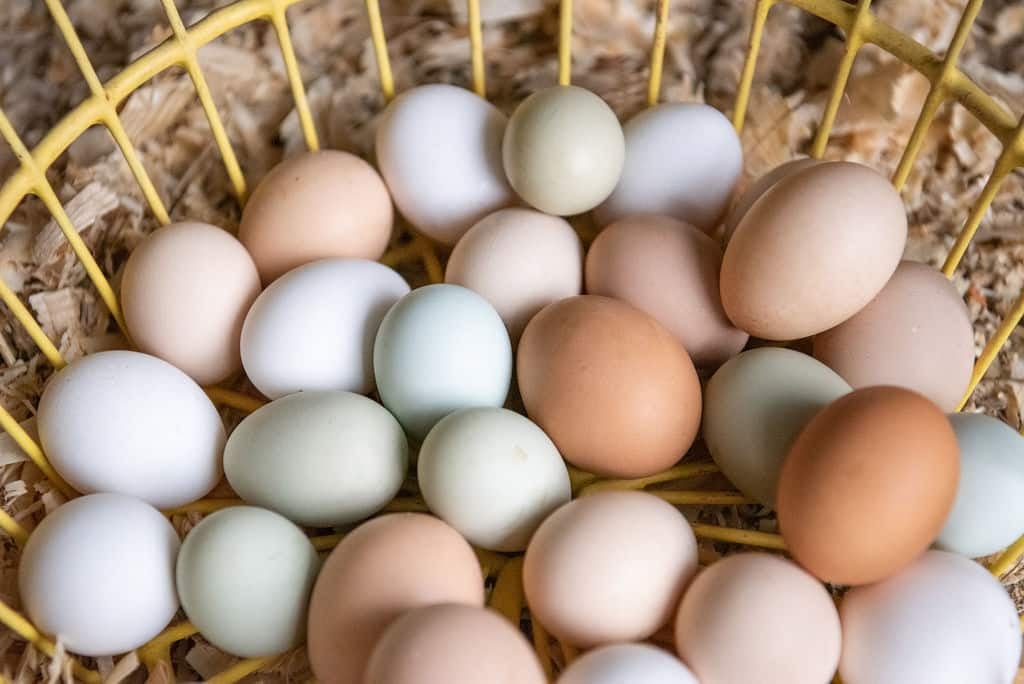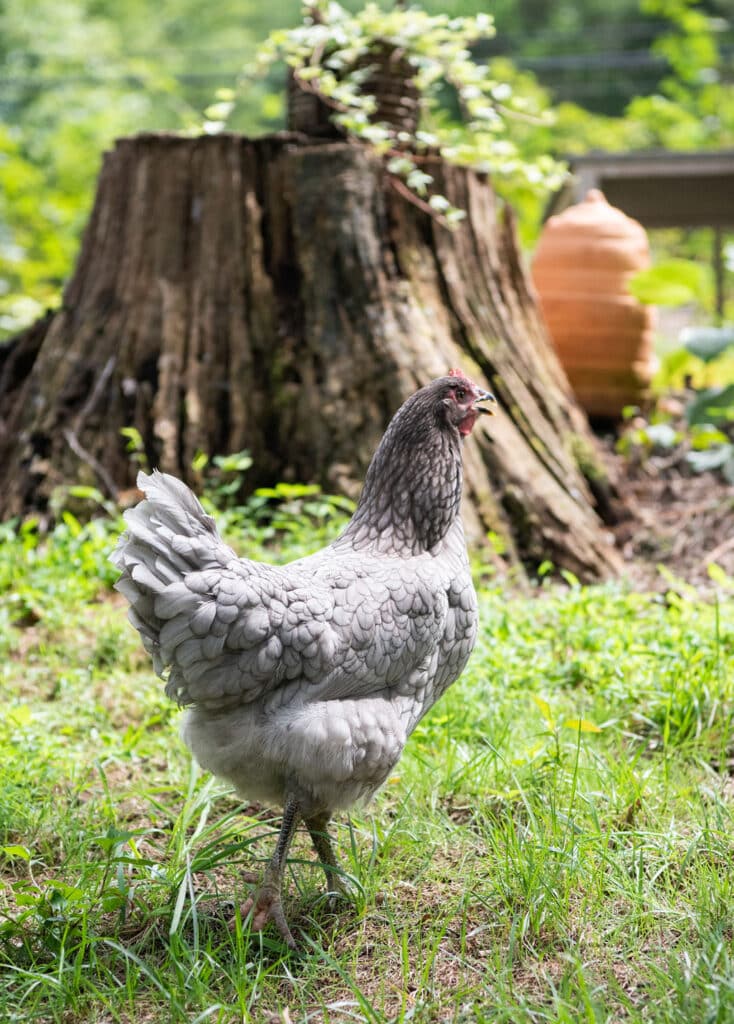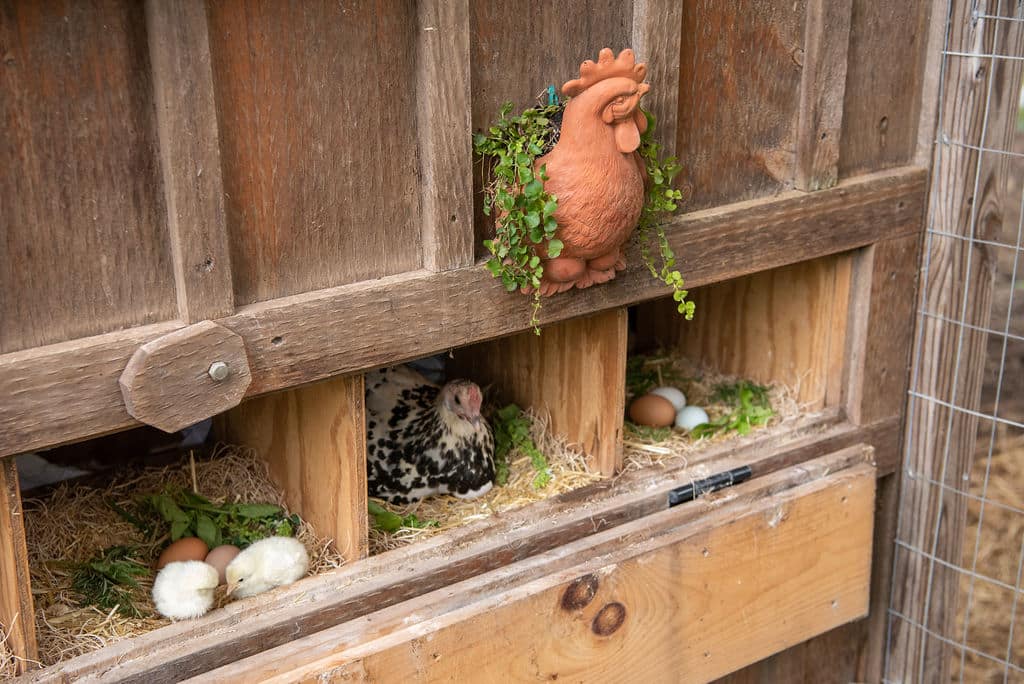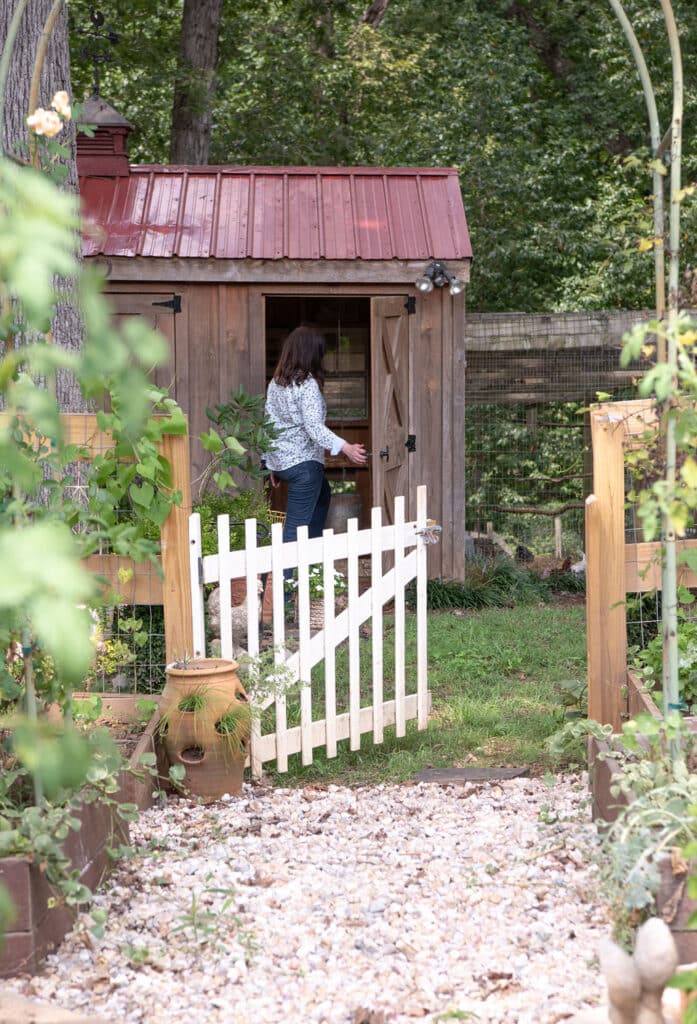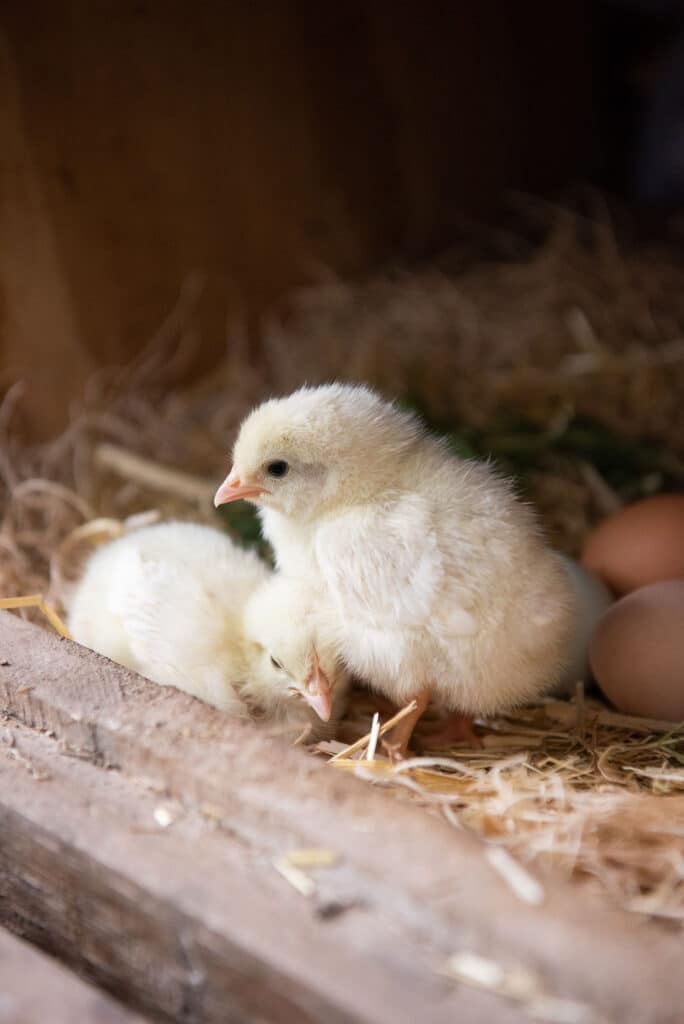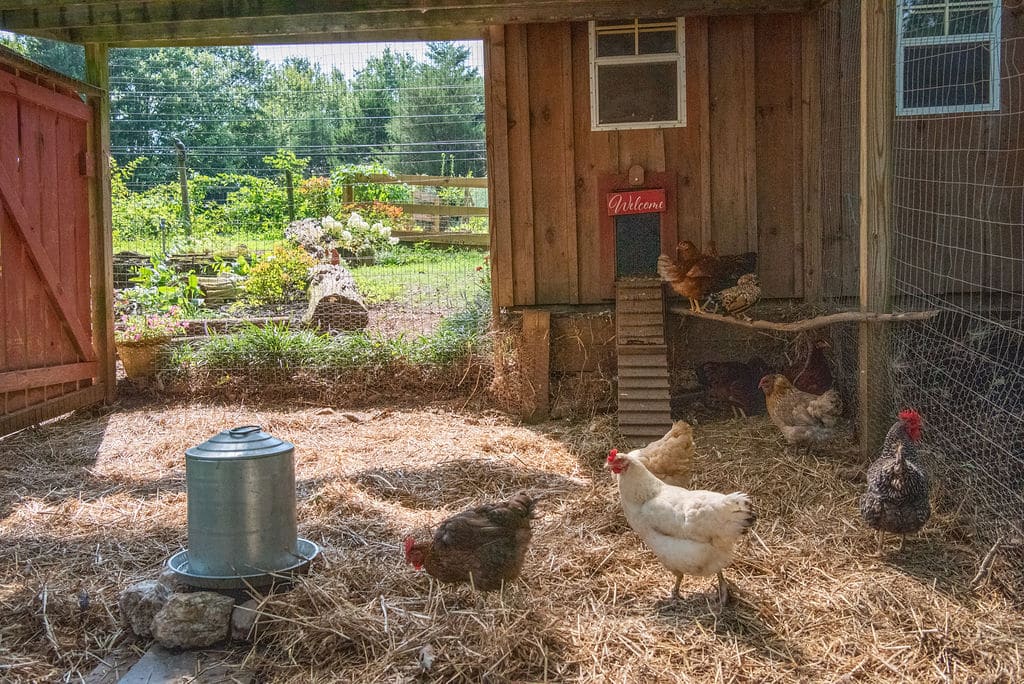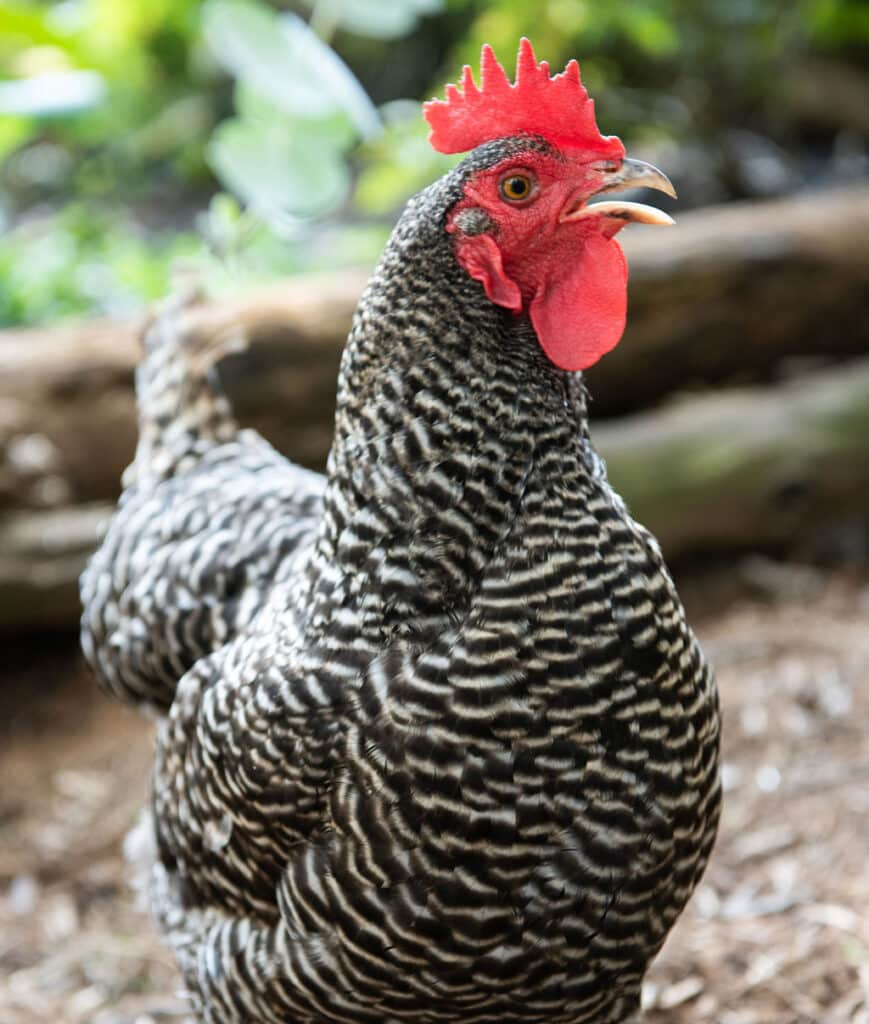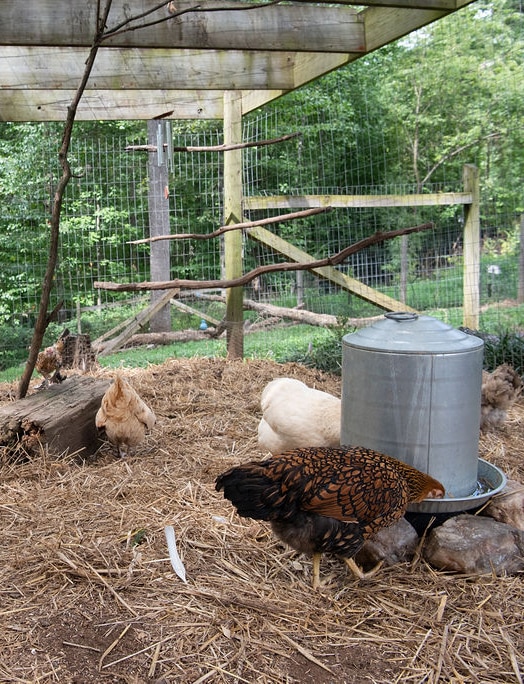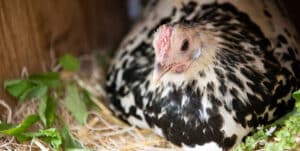In Virginia Wine Country, raising chickens is a popular homestead activity that makes farm-to-table living easy with delicious fresh eggs. Everyone from top Virginia restaurants including The Inn at Little Washington to A-list celebrities like Jennifer Garner and Prince Harry and Meghan Markle are trying their hand at raising chickens and creating spectacular chicken coops that not only serve their function of housing the chickens but also look fabulous.
There’s nothing quite like gathering fresh eggs each morning from your own happy and healthy flock of hens, and enjoying in an omelette, quiche or over-easy. No matter whether you live on an historic street downtown or on a sprawling country estate, if the local zoning laws allow and you have a little garden, you have room for a few lovely chickens in your backyard.
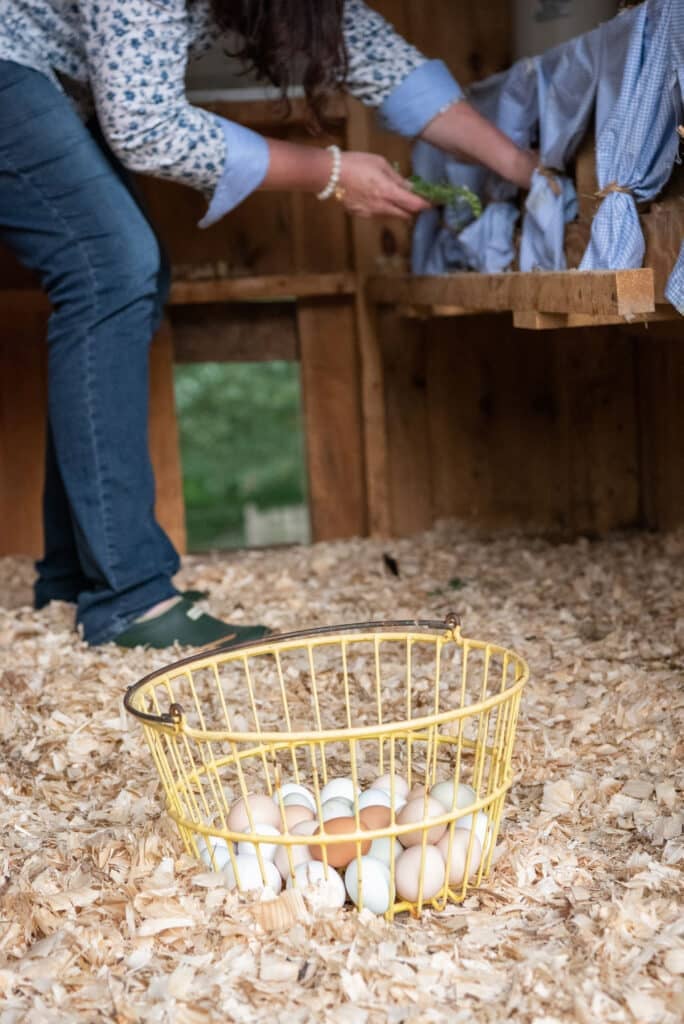
Start Your Backyard Chicken Flock
The first step in raising backyard chickens is to decide if you’re going to start with hatching eggs, chicks or young adult hens for your backyard flock. I think it’s a little easier to begin with baby chicks than eggs, but both are good options for beginners. Fertile eggs and day-old chicks can be purchased locally on craigslist or at a feed store. For the most choice in breeds, shop online from a hatchery. You can choose chickens based on their temperament (I love plump Buff Orpingtons like the Queen Mum raises because they’re so friendly!) or even find some that lay blue, green or chocolate brown speckled eggs. I collect heritage breed birds because I love the idea of preserving history as well as the vast array of egg colors and feather patterns. If you want to start simpler yet and have your eggs more quickly, go online and look for young birds for sale. Sometimes there will be local farm swaps or offers on social platforms. Ask around to friends too. I have started a few backyard flocks for other families this way.
If you opt for day-old chicks, you can often get them sexed as well and can choose to have pullets (girls) for eggs or cockerels (boys) for meat. Keep in mind, it will be about six months before your young hens start laying nutritious and flavorful eggs for you to gather. If you’d rather not start with baby chicks—and they do require more attention—you can have an instant flock by purchasing adult birds from a hatchery or another backyard farmer. Many farm stores host small animal markets occasionally on Saturdays where you can meet the poultry and the breeder. Chatting with experienced chicken-keepers can be a great source of information for raising chickens for eggs.
How to Start Hatching Eggs for Raising Chickens
To start eggs, you’ll need an incubator. Once they hatch, you’ll need a brooder box, which is where the chicks live for the next several weeks. See the list for the basics you’ll need (easy to find at local feed stores):
- Box (We drilled lots of ventilation holes in an extra large storage bin and made a lid of hardware cloth on ours.)
- Heat Lamp
- Thermometer
- Pine Shavings
- Chick Waterer
- Chick Feeder
- Starter Feed
We start our chicks off in the house for extra temperature control and get to enjoy them all day. After a few weeks, as long as the weather is mild, we move the brooder box to the garden shed; and after they are fully feathered out (about 6 weeks), we move them to the coop.
Chicken Coop Style & Decor
You will need a forever-home for your new poultry—a coop. You can buy one pre-made from a company that builds sheds and outdoor structures, hire someone to execute your dream plan, or do a little diy project to build one yourself, such as repurposing a charming old playhouse or a stall in your stable. Many first-time chicken-keepers start small and find themselves upgrading in a couple years when their collection of feathered friends has grown. I recommend giving yourself a little more than the recommended 3 square feet per bird. They’ll enjoy the space, and someday you may want more birds.
No matter what style you want, there are a plethora of backyard chicken coop designs to inspire you, from a simple barn style like mine to beachy cottages or elaborate multi-level French chateaus with porches. There is even a company making imaginative hobbit house style coops. Clever signs, creative paint schemes, dramatic chandeliers, wall art, window boxes, curtains, cupolas, columns, landscaping and more are all fun ways to personalize the space and make it a pretty addition to your property that you will enjoy.
How to Raise Chickens for Eggs
Whatever design and décor you choose, there are some fundamentals to consider. At its most basic, the coop should provide cool water, healthy food, shelter from the elements, safety from predators, a roost for sleeping, nest boxes for egg laying and some enrichment. That’s right, your flock needs a play space to stay busy and happy. Ideally, you can let the chickens out to free range often when you are nearby and they can enjoy scratching about in the grass, chasing bugs and taking a dust bath in your mulch. Yes, they may make a little bit of a happy mess in your flower borders once in a while, but I like to think of them as charming additions to the scene!
For the times when they are unsupervised, your coop should have an attached run. Inside the run, give your feathered friends plenty of room for exercise and add a few logs and big rocks for climbing on, some sturdy branches for perching and getting a different view (a vintage wooden ladder is both charming and practical), a sandbox for dust baths and some straw or pine shavings to scratch about in. We also have a special bowl where we serve treats like scratch grain, leftovers from dinner or trimmings from the vegetable garden and orchard. In winter, I grow flats of wheatgrass for them in the greenhouse and make them a big bowl of warm oatmeal on the coldest days. This is not at all necessary; I just enjoy pampering our pets. Just like us, chickens enjoy variety, so move things around and mix it up.
How To Make Your Backyard Chicken Coop Predator-Proof
When your baby chicks are ready for their permanent home, the most important thing is to make certain that the coop and attached run are predator-proof. In Virginia, you need to ward off wily foxes, raccoons and hawks. Plan ahead to deter pests that could dig under your coop by burying part of the fence outwards at the base so an animal digging at the bottom of the wall will hit…more fence. I use welded 2×4 wire on our run because it is so much stronger and longer lasting than chicken wire. That’s not to say chicken wire with its smaller openings isn’t still important for safety. It’s the best way to keep little chicks inside the fence, so I line the interior perimeter of our run with it. We also have a beautiful pergola roof on the run that we covered with wire fence so there is no access for predators from the top either… and it’s the perfect place for growing roses and wisteria to shade the flock during the hottest months of our Virginia summers.
There’s nothing quite like gathering fresh eggs each morning from your own happy and healthy hens, and enjoying in an omelette, quiche or over-easy.
Other deterrents include motion-activated lights, lights and radios on timers, and decoys like plastic garden owls. I’d also suggest placing your poultry where it will be easy to give them fresh water and where it is in your daily “path.” At our house, it is near the vegetable garden and the basketball court, so we are very often nearby. The hens love the garden, too. I grow herbs for them to eat and to keep their nest boxes fresh, plus they enjoy extra tomatoes, squash and berries along with the many weeds I pull for them. The pretty bench near our coop is a favorite spot to sip a glass of Virginia wine in the evening and watch “the girls.” They each have such a funny, unique personality!
Feeding Pet Chickens
A well-designed chicken feeder simplifies feeding, minimizes waste, and ensures proper nutrition for your flock. Keeping feed elevated and contained makes sure your feed stays clean and accessible while reducing contamination. You’ll also avoid attracting pests. Choose the correct type of feeder based on flock size and layout, and invest in a durable model for time-saving convenience. With a reliable chicken feeder, you promote a healthier, more productive flock with optimized growth and egg production.
Once you’ve chosen a feeder, consider the type of feed you want your girls to have. Some choose organic feeds or even locally milled feeds. The most popular choice is layer pellets available at feed stores. This takes the guesswork out of creating a good blend that meets the nutritional needs of your flock. Chickens raised for meat have different needs than egg layers, for example. I opt for a prepared feed and enjoy feeding our chickens garden leftovers and some treats from dinner leftovers. This is just a supplement or treat for them though. It is important that they receive the proper protein and nutrients. I also offer our chickens oyster shell crumbles free choice. They need that calcium if they are going to lay an egg almost every day.
Raising Chickens in the Backyard Resources
Additionally, I recommend finding yourself a chicken mentor, because someone with a little bit of experience can really help you. Check out the Facebook group CLUCK, Charlottesville League of Urban Chicken Keepers, and other locally-based groups. You can always post questions there and feel confident in having great support. It is also helpful to buy chicken-parenting books for a quick go-to source on the fly. A few of my favorites include: Fresh Eggs Daily, Storey’s Guide to Raising Chickens and The Chicken: A Natural History. There are also an array of cookbooks that are all about eggs. Here, we have some delicious recipes from Chef Ian at Pippin Hill Farm & Vineyards for soft scrambled eggs and other delicious entrees.
No matter how many chickens or which coop style you choose, raising chickens can be a very fun and rewarding backyard hobby. You might enjoy your adventure with chickens so much that you find yourself contemplating planting a little fruit orchard or raising honeybees. Living farm-to-table, from tasting at a local vineyard and shopping at your local farmers market to raising chickens and growing greens for your salad bowl, are some of the most fulfilling and delicious ways to enjoy life in Virginia wine country.
Popular Chicken Breeds for A Backyard Flock
The Silver Spangled Hamburg (at very top) is a heritage bird with an independent personality that likes to explore and free range. These small chickens with their dramatic coloring and perky tail feathers are elegant additions to your flock. They are consistent layers and have a bright cheerfulness when foraging. McMurray Hatchery reports that in England and Holland these heritage birds were such prolific layers of medium-sized white eggs that they were referred to as the “Dutch Everyday Layer” rather than Silver Spangled Hamburg.
The Lavender Orpington is a large fluffy chicken. Though they are not recognized by the American Poultry Association, because of their special coloration they are a rare variety to add to your flock. They are a fair egg layer of medium to large size light brown eggs. Like other Orpingtons, they are super docile and great with children, making them one of the best options for a backyard flock.
Delawares, white with black accents, were originally called “Indian Rivers.” They were developed by George Ellis of Delaware in 1940 and quite popular for a time in the industry. Though its economic dominance was short lived and would have drifted into obscurity if it wasn’t for the dedication of a few breeders, the Delaware still makes an excellent dual-purpose bird and has a calm, intelligent and friendly disposition.
The Ameraucana/Easter Egger is a highly popular breed, known for its beautiful eggs in shades of blue and green. Originally developed in the 1970s from Araucanas, mature Ameraucanas are medium-sized birds with pea combs, are extremely hardy, and come in a wonderful combination of colors and color patterns. Baby chicks come in all colors, just like the adults. Easter Eggers do not qualify to be shown since they do not conform to a breed standard.
Barred Rocks, a popular hardy heritage breed, are recognizable by their black and white stripes that make them stand out in the flock. Rocks are large birds that have long been preferred for small farms and homesteads due to their size, productivity and gentle personalities. They can be an excellent choice for both meat and brown eggs.
Golden Laced Wyandottes are descended from a Wisconsin breed called Winnebagoes. By 1880, they received their present-day name. This variety is a beautiful combination of rich golden bay laced with lustrous greenish black. Wyandottes are a favorite amongst backyard flock owners for their dependable brown egg laying, easygoing nature, hardiness and the great variety of beautiful feather patterns.
Buff Orpingtons are large birds with quiet dispositions nicknamed “Golden Beauties.” Originally brought to the U.S. from England in the late 1800s, they became one of the most popular farm fowls in this country, laying brown eggs year-round. Queen Victoria herself kept a flock of Orpingtons. Queen Elizabeth—the Queen Mother—kept Orpingtons, and the Buff variety reputed to be her favorites. Prince Charles remains a champion of Orpingtons at his farm, Highgrove in Tetbury, where he practices organic farming and animal husbandry.
The Black Australorp breed originated in Australia. Near the turn of the century, a pen of six “Australorp” hens in Geelong, Victoria, set a world record by laying 1,857 eggs in 365 days—an average of 309.5 eggs each. Soon after, another hen set a new world record when she laid an amazing 364 eggs in 365 days. With such great successes in the egg-laying contests, poultrymen worldwide became interested and many were imported into England and America in the early 1920s. Australorp chickens are a medium weight breed and lay an abundance of large eggs with a slight pink tint.
For other similar articles on gardens, beekeeping and small animals, see our Home & Garden page. And, for gardening supplies and tools, explore the country home and garden collections at our Wine & Country Shop website. ~
R. L. JOHNSON is our Co-Publisher and Creative Director. Bethke studied at the prestigious ArtCenter College of Design and began her career as a professional photographer in Los Angeles. She moved into graphic design and art direction when she relocated to Charlottesville in 1994. As our company’s co-founder and visionary, she enjoys all aspects of storytelling.
JENNIFER BRYERTON has been our co-publisher and editor-in-chief since 1998 and has a master’s in education. Her family cares for a flock of chickens, ducks and a few mini goats at their home in Ivy, just outside of Charlottesville.

